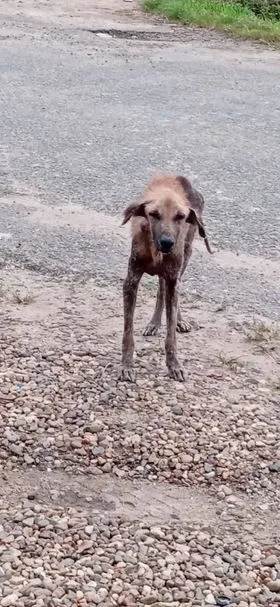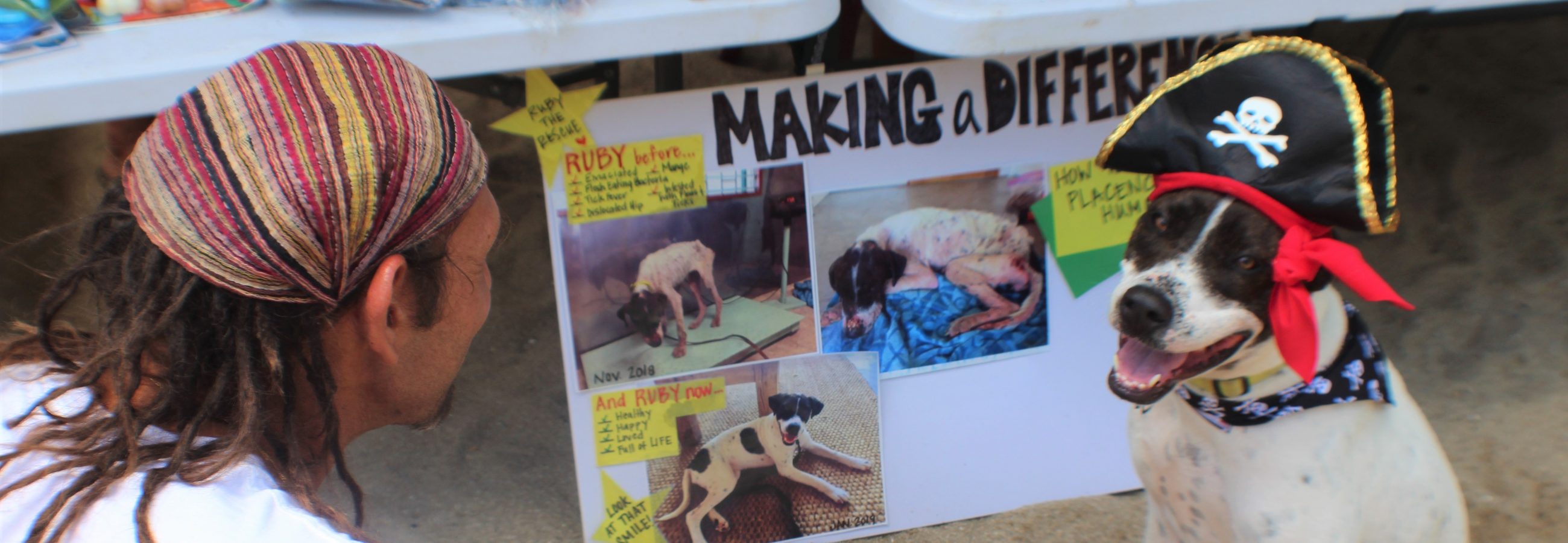Rescue and Adoption

PHS becomes involved in pet rescues when pets are abused, abandoned, or the owner cannot care for them anymore. Our volunteer rescue and adoption coordinator is Judy Dyne, you can reach her at 613-7387, WhatsApp 613-7387 or Facebook messenger.
Abuse. In instances of abuse, PHS first works with the owner of the animal to try to resolve the abusive situation – first through education, and then by trying to persuade the owner to transfer ownership of the pet to PHS if education doesn’t stop the abuse. If neither route is successful, PHS works with local police to have the animal removed from the abusive environment.
Abandonment. Pets are most often abandoned when a puppy or kitten becomes an adult dog or cat and is no longer the fluffy little ball of fur that first enamored the abandoning owner. These animals usually become roamers and may find a new home on their own – or at least people who feed and care for them – you’ll often hear dogs referred to as “my dog that is not my dog.” Some dogs become “tourist dogs” who “adopt” tourists for the time the tourist is on the Peninsula. The tourists feed and care for the dog during their vacation, and when they leave, the dog finds another tourist to adopt. Roamers are often also tourist dogs.
Abandoned cats are often also fed by some locals and tourists, but many become feral because of the general dislike of cats by many people in Peninsula communities.
Many of the tourist dogs, roamers and abandoned cats live a fairly good life on the Peninsula, although most dogs die early of tick fever (ehrlichia), heartworm, or TVT (transmissible venereal tumors). Others get run over by a car. Cats are more likely to die early of untreated urinary tract infections, dog attacks or abuse by humans.
Because most dogs and cats roam free on the Peninsula, owned or unowned, PHS often doesn’t know a cat or dog is in trouble unless someone reports it to us – usually when an animal is visibly ill or starving.
Then there are the animals whose owners want them, but can’t afford to care for them – or who are leaving the Peninsula and don’t feel that they can take their dog or cat with them. (Because the Placencia Peninsula is a tourist destination with a transient population, PHS is faced with more and more situations involving pet owners leaving who need to find homes for their animals – particularly cats.)
Rescue and Foster Homes. Because real estate prices are so high on the Peninsula with very little land available, PHS does not have the resources to own or operate a shelter. Therefore, abandoned animals are placed in foster homes until adopted. PHS assumes the cost of basic veterinary care – spaying or neutering, vaccinations and any other vet treatment necessary. The foster “parents” of the animal almost always generously pay for food out of their own pockets.
Adoption. Dogs are much more readily adopted than cats, and PHS has successfully found adopted homes for all dogs that have come under its care. And, the number of tourists who adopt dogs and take them back home with them has been steadily increasing. (PHS can make all the arrangements to move the animal to its new home outside Belize, but the adopting owner must pay all transportation expenses, including purchasing a carrier, international animal health certificate and airfare.
RuDy
Rudy was found in Dangriga by a former board member, Kellie Shuman and her husband Dane. She was a few days away from death, but the Shumans would not accept that. They brought her home to Placencia. She was skin and bones, could not walk and had tick fever, mange, flesh eating bacteria, and a dislocated hip. With a lot of time, love and care, Rudy recovered and turned out to be a very happy dog. Rudy now lives a great life with Dane’s sister in Nebraska, USA.
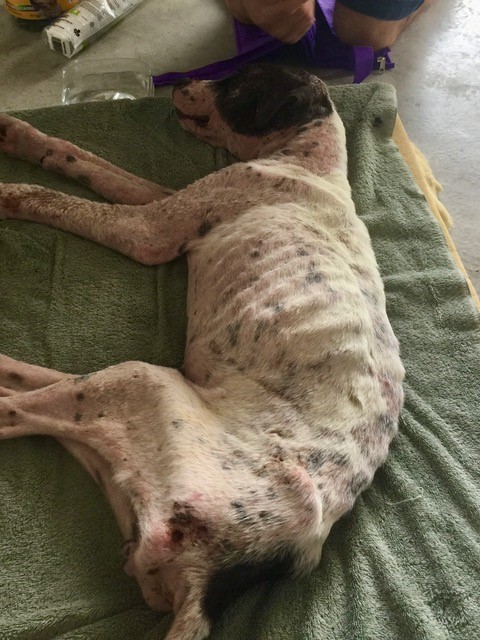
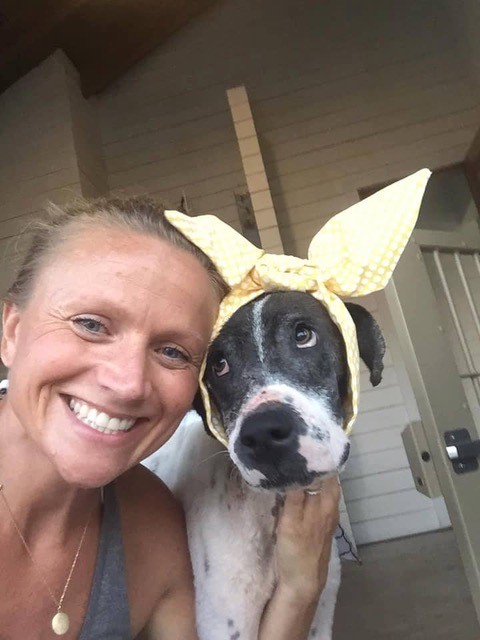
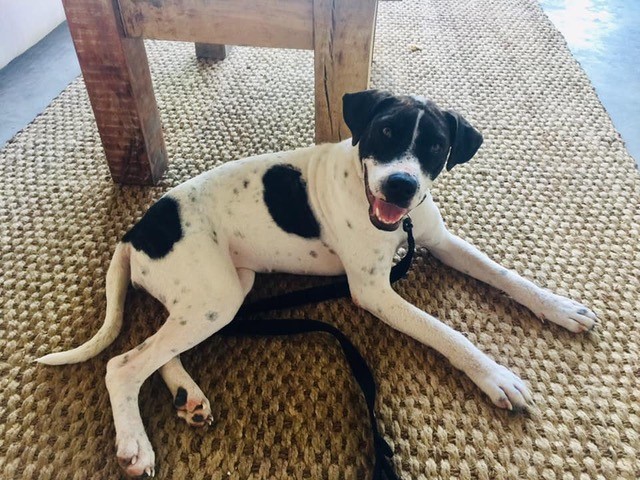
Mike
THE STORY OF MIKE
Mike” came to me on October 4, 2022. I had previously fostered another malnourished dog and had intended not to take on another, at least for a while. It was “The Ears”. I could see that Mike had lost hope. When things are really bad, hope is the last thing we all let go of. I wasn’t about to let him slip away.
I was told that he had been abandoned in Pomona, about an hour north of Placencia; that it was reported that he had been shot with a pellet gun and had had a broken femur. Due to a skin lesion on his flank, I suspected he may have been struck by a car. It was also reported that a good Samaritan had taken him in, but could not keep him because she had other dogs. It was said that he would probably die in 2 days if he were not rescued. So he came to me.
Mike presented as an older; 30-pound; extremely emaciated dog with practically no hair. His tail resembled a large rat tail. He had a twisted pelvis and abnormal stance, most likely due to his previous (untreated?) leg injury. His gait is still affected by that injury, as he tends to drag his right rear leg a bit.
When Mike came to me, he didn’t have a name. One of the things I noticed when my 3-year tenure started in Placencia was that there seemed to be an inordinate number of “Mikes” here. Problem solved. There’s now only one 4-legged Mike in Placencia!
As I got Mike settled in, I created a dossier for him that included health and behavioral updates. I concluded the dossier once we got to the point where I felt that he was as normal a dog as possible for his history.
He was on a number of meds provided by the Placencia Humane Society for worms, infection, vitamin deficiency and an eye issue. His emaciation required extreme care. I put him on a special, limited diet, as my prior research indicated that dogs’ starvation physiology is quite different from humans. The temptation to overfeed can be quite strong. Faced with all this, Mike made really good progress.
Aside from being weak and sick, Mike was unsure of his status when he came to me. I . kept him in an open, covered kennel on my veranda for a few days so he would feel safe. He was fed there as well. It didn’t take long for him to venture out. One evening, he stood in the doorway as if asking to be let in. I motioned to him and he came up and stood with his head between my knees so I could give him some love. That was a turning point for Mike and me. To this day, that is his safe place. I saw the first feeble tail wag and saw the ears come up.
Mike is currently doing well considering his history. He’s a handsome senior dog who’s safe, food secure and loved. He’s improved from a skeletal 30 pounds at his first vet visit to nearly 50 pounds at his most recent. The owner of the Pickled Parrot saw Mike with me a few weeks ago and asked about my “new dog”. When I told him it was Mike, he couldn’t believe it. I’ve learned a lot about Mike’s personality as well. He’s friendly toward other animals, but distrusts large dogs he doesn’t know. He’s been attacked while leashed 4 or 5 times, leading to my carrying a stout cane when we’re walking. I’ve been forced to deploy it a few times. Mike enjoys being petted and having his ears rubbed but does not enjoy being hugged. I’ve always let my dogs share my bed and he likes to sleep on it, but if I get on he gets off. He goes to his personal chair, equipped with his personal fan.
When I took Mike on as a foster, I knew it would be a challenge to find a permanent home for him. I would adopt him out if I encountered the right situation for him. Despite his history, Mike would stay outdoors all day if he could so a fenced in yard would be essential.
Fostering here for a single person with significant issues back in The States is a difficult responsibility, but Mike is my boy and I will do what’s best for him, even if it breaks my heart.
